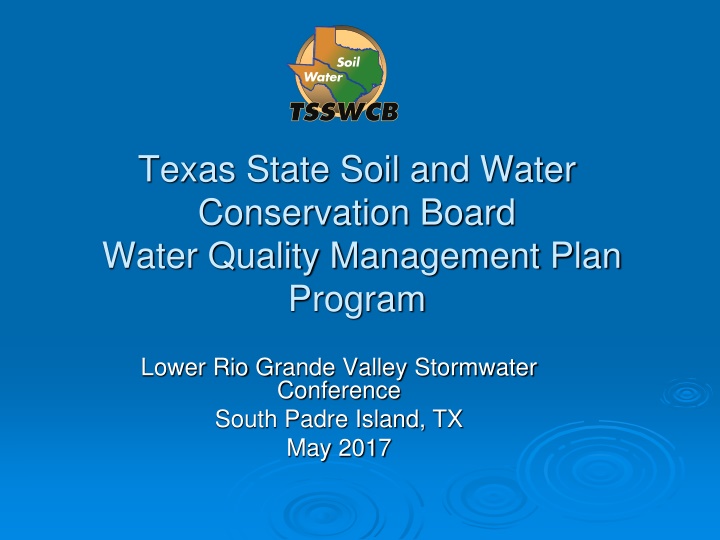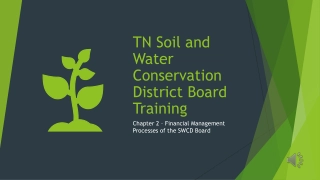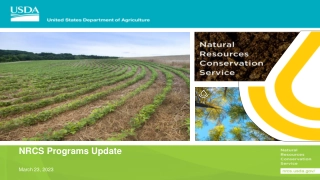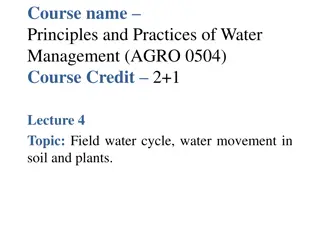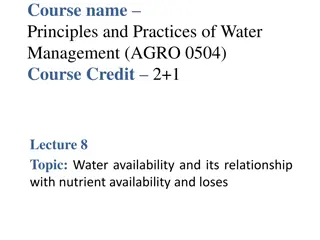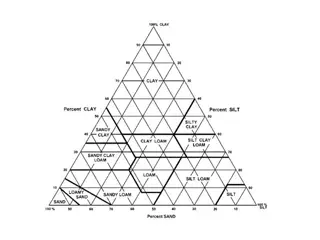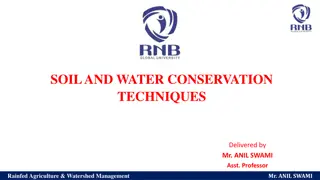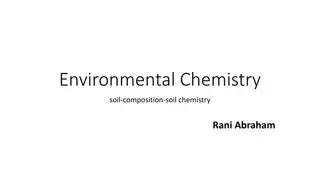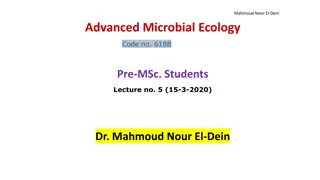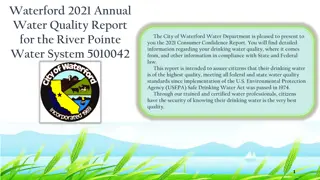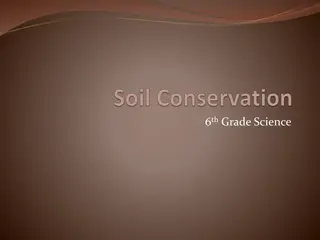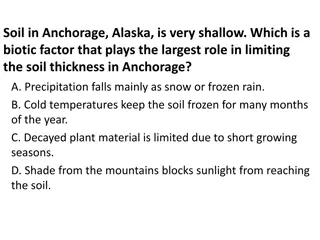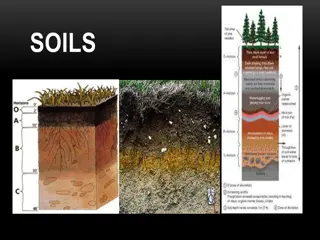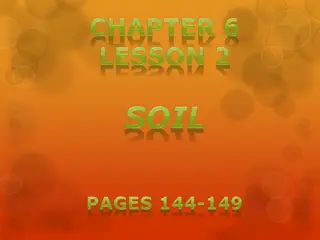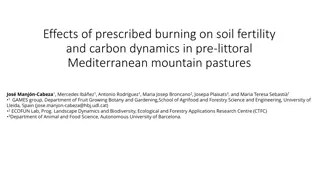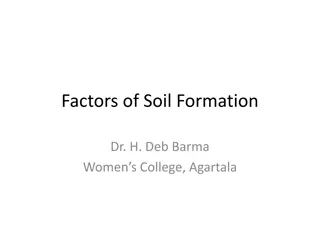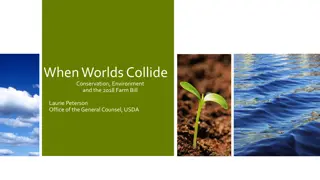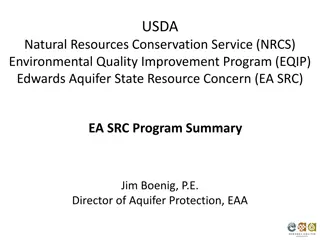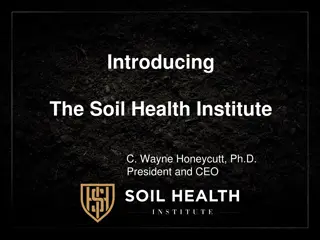Texas State Soil and Water Conservation Board: Water Quality Management Programs
The Texas State Soil and Water Conservation Board (TSSWCB) plays a critical role in managing programs to address agricultural and silvicultural nonpoint source water pollution in Texas. Through initiatives like the Water Quality Management Plan Program, the TSSWCB promotes conservation practices to safeguard state water resources and soil quality. Learn about the TSSWCB's history, agency role, and efforts to enhance water quality in Texas.
Download Presentation

Please find below an Image/Link to download the presentation.
The content on the website is provided AS IS for your information and personal use only. It may not be sold, licensed, or shared on other websites without obtaining consent from the author.If you encounter any issues during the download, it is possible that the publisher has removed the file from their server.
You are allowed to download the files provided on this website for personal or commercial use, subject to the condition that they are used lawfully. All files are the property of their respective owners.
The content on the website is provided AS IS for your information and personal use only. It may not be sold, licensed, or shared on other websites without obtaining consent from the author.
E N D
Presentation Transcript
Texas State Soil and Water Conservation Board Water Quality Management Plan Program Lower Rio Grande Valley Stormwater Conference South Padre Island, TX May 2017
Agency Role Water Quality Mandate - Texas Agriculture Code 201.026 Texas State Soil and Water Conservation Board (TSSWCB) is the lead agency in Texas responsible for planning, implementing and managing programs and practices for abating agricultural and silvicultural nonpoint source water pollution.
Agency Role Provide technical and financial assistance to local soil and water conservation districts Local districts encourage landowners and agricultural producers to voluntarily conserve natural resources on their private lands through the implementation of best management practices Results in a positive impact on state water resources, and protects soil quality which supports the strength of Texas agricultural economy
How this gets done TSSWCB administers several programs to achieve conservation goals across the state, they include: Water Quality Management Plan Program Nonpoint Source Grant Program Water Supply Enhancement Program (Brush control) Flood Control Program
WQMP Program History Created by the 73rd Texas Legislature in 1993 through Senate Bill 503 (often referred to as 503 Program, or 503 plans, or 503 cost-share) Voluntary enrollment in WQMP Program for farmers and ranchers, except that the 77th Texas Legislature in 2001 (Senate Bill 1339) said poultry operations must obtain a WQMP
Water Quality Management Plans Site-specific plan for land improvement measures developed through SWCD for agricultural lands Provides farmers and ranchers a voluntary opportunity to achieve a level of pollution prevention or abatement consistent with state water quality standards Includes appropriate and essential land treatment practices, production practices, management measures, or technologies applicable to the planned land use Best available management and technology as described in NRCS Field Office Technical Guide
WQMPs Site specific plans with a combination of BMPs for the treatment of identified resource concerns Based on: Soil types Planned land use/production goals Known/potential water quality/natural resource problems (SWAPA) Other site specific factors (topo, etc.)
WQMPs Cover the entire farm or ranch Specifically designed to achieve pollution prevention/abatement Texas Water Code 26.121
Technical Criteria for WQMPs NRCS Field Office Technical Guide (FOTG) To view all approved practices for selected county: http://efotg.nrcs.usda.gov/efotg_locator.aspx?map=TX Select region Select county Select Section IV Select A. Conservation Practices
FOTG essential practices for each land use: Cropland Rangeland Conservation crop rotation Prescribed grazing Livestock water Wildlife Residue mgmt. Pastureland Wildlife mgmt. Forestland Prescribed grazing Livestock water Forest mgmt.
WQMPs also include: Nutrient management Pest management Animal waste management system Waste utilization Irrigation water management
WQMPs also include: Erosion control measures to bring soil loss to acceptable levels (T) Erosion control to treat other forms of erosion (i.e. gullies) according to FOTG quality criteria Other practices to meet site specific concerns
Why have a WQMP? Abate/prevent erosion and promote conservation A strategic management plan for your operation Assurance policy state-certified proof that you aren t just sitting around doing nothing Demonstrate that voluntary conservation programs promote agricultural production and environmental quality as compatible goals Demonstrate that agriculture is doing our part to protect water quality Resolve water quality complaints through voluntary process with SWCD and TSSWCB
WQMPs What Does A Plan Contain? District-Cooperator Agreement Request for Planning Assistance Soils Map & Interpretations Conservation Plan Map Narrative Record of decisions (practices) needed to implement WQMP Implementation schedule indicating years practices are to be applied Worksheets used during the inventory and planning process of developing WQMP NRCS Practice Standards and engineering designs Signature sheet to verify individual's privacy
How to get a WQMP? An individual requests planning assistance through their local SWCD The WQMP is usually developed by the SWCD Technician with NRCS and TSSWCB assistance The WQMP is approved by the landowner, the SWCD and NRCS and then certified by the TSSWCB Producer implements the WQMP on their land Annual status reviews are conducted to ensure that the landowner implements BMPs as agreed to in the implementation schedule
Financial Assistance State (TSSWCB) or Federal (NRCS) assistance is obtainable for certain conservation practices TSSWCB SB503WQMP Financial Assistance CWASection 319 funding NRCS Farm Bill Programs
Contact Information Harlingen Regional Office 1824 West Jefferson Avenue, Suite A Harlingen, TX 78550-5247 Phone (956) 421-5841 Fax (956) 421-5853
Brian Koch Regional Watershed Coordinator Texas State Soil and Water Conservation Board Wharton Regional Office 1120 Hodges Ln Wharton, TX 77488 979-532-9496 v 979-532-8765 f bkoch@tsswcb.texas.gov http://www.tsswcb.texas.gov/ http://www.tsswcb.texas.gov/cwp Authorization for use or reproduction of any original material contained in this presentation is freely granted. TSSWCB would appreciate acknowledgement.
